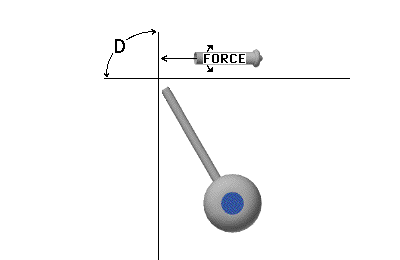 |
|||||
| Home | Research | For Teachers | HISTORY Level 1 Level 2 Level 3 |
PRINCIPLES Level 1 Level 2 Level 3 |
CAREER Level 1 Level 2 Level 3 |
| Gallery | Hot Links | What's New! | |||
| Web Administration and Tools | |||||
 |
|||||
| Home | Research | For Teachers | HISTORY Level 1 Level 2 Level 3 |
PRINCIPLES Level 1 Level 2 Level 3 |
CAREER Level 1 Level 2 Level 3 |
| Gallery | Hot Links | What's New! | |||
| Web Administration and Tools | |||||
![]()
Suppose you were asked to determine the mechanical horsepower (HP) required to retract a landing gear in a required time period. How would you do the calculations?

Example:
Given- Force Requirements = 5000 lb (this is the force that has to be moved)
Distance moved = 2 ft
(this is the distance you must move the force)
Time required = 30 s (this is
the time required to move that distance)
Power is given as Force times velocity for a constant force (P=Fv). If the force is
not constant, then you can use the average force over the time required. The
velocity in this case is the average velocity, namely, the distance traveled over the time
required. Therefore,
Power=Force x distance / time
![]()
We convert to horsepower (HP) using the conversion factor 550![]() equals 1 HP. Therefore, by
multiplying 334
equals 1 HP. Therefore, by
multiplying 334 ![]() by [1 HP/ (550
by [1 HP/ (550 ![]() )], we find that we need 0.61 HP.
)], we find that we need 0.61 HP.
Thus, an actuating cylinder must then be mounted which can deliver 0.61 HP. The actuating cylinder for the retractable landing gear is mounted so that it can move in order that the piston rod in the actuating cylinder won't bend. A flexible hose to the oil pressure lines is put at the cylinder attachment so that it won't break during movement.
The selection of the actuating cylinder depends upon two parameters:
The hydraulic system oil flow rate, Q, may be measured in gallons per minute
(gpm). The flow rate required can be related to the volume of fluid required to be
moved (in cubic inches-cu in) and the time required for the job (in minutes).
![]()
The volume of fluid required to be moved is given by the input force times the piston
stroke (in inches) divided by the system oil pressure. Remember that force divided
by pressure is an area, and, multiplied by the piston stroke defines the volume
moved. Therefore,
![]()
Example:
If the pressure in the system = 2000 psi, find Q of previous problem.
![]()
The hydraulic horsepower is the power provided by the hydraulic system. It is directly proportional to the rate of flow, the pressure, a constant and inversely proportional to the efficiency of the system. The coefficient equals 0.000583 and is the conversion factor between gallon-lbs/(minute-square inches) and horsepower. Therefore:
![]()
Example:
Find the hydraulic HP of the previous problem if the system has an efficiency of 1.
![]()
F-111 sweep back problem
Let's look at a typical problem. Find the hydraulic and mechanical HP required to
vary the sweep back of an experimental F-111 wing, given the following data:
Force required = 160,000 lb;
Cross-sectional area of the actuating cylinder piston A = 32 square in
Fluid Pressure P = 5000 lb/sq. in. = 5000 psi
Piston stroke D=30 inches
Time required for sweeping the wing T=75 seconds=1.25 minutes
Hydraulic HP is found by getting the flow rate, Q, in gpm, FIRST

![]()
Now having found Q, we can now find the Hydraulic HP, assuming an efficiency of 1, using
![]()
![]()
The mechanical HP is found using
![]()
By comparing both results, we can see that the hydraulic system will meet the requirements
of the mechanical system HP.
Send all comments to ![]() aeromaster@eng.fiu.edu
aeromaster@eng.fiu.edu
© 1995-98 ALLSTAR Network. All rights reserved worldwide.
Updated: February 23, 1999